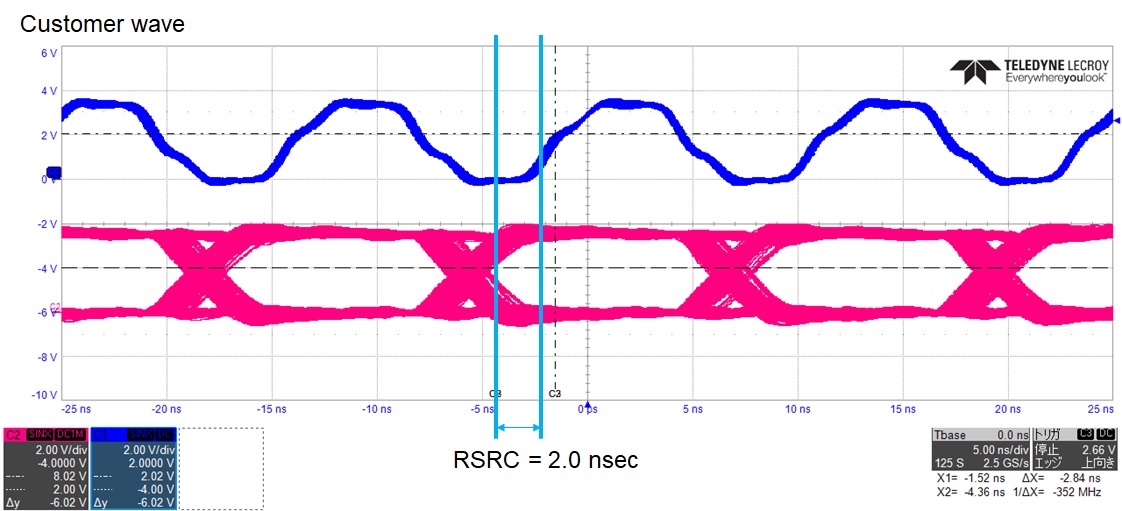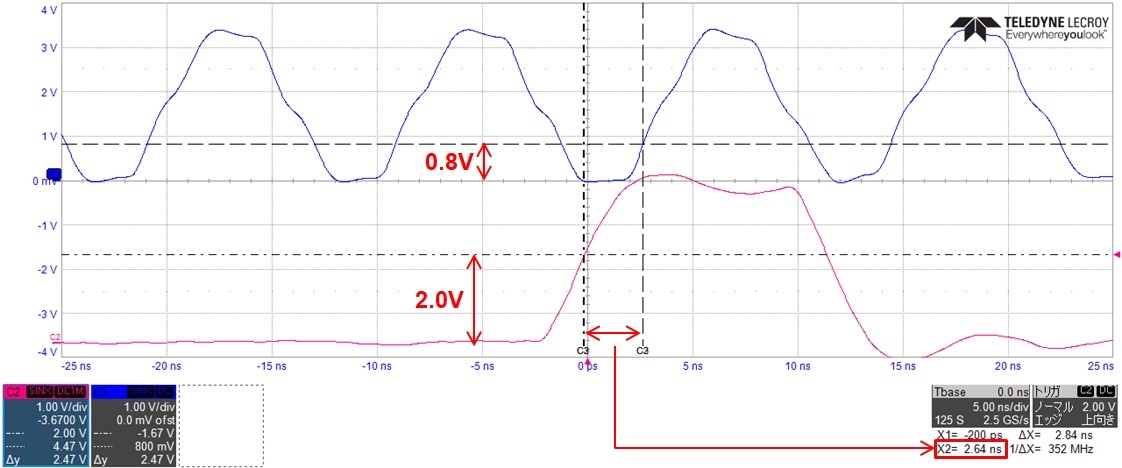Hi Team,
I have a confirmation with DS90CR288A.
Customers are evaluating DS90CR288A.
I think that the setup hold time is not kept in the output waveform of CMOS / TTL.
Below is the waveform measured by the customer.
The data sheet spec says 3.5nsec, but it is output below the spec.
Is this spec correct?
I think that the product is not output correctly. What do you think?
Depending on the device, the image may not be displayed correctly.
Best Regards,
Ishiwata




